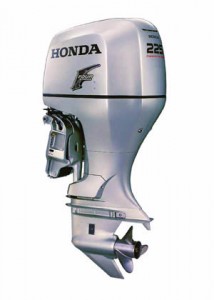Two-Stroke, Four-Stroke: Cleaning Up Perceptions
Don't believe everything you hear about personal watercraft and two-stroke engines
Q: I hear that jet skis pollute the water and air more than any other kind of boat. Is that true?
Nathan M.
Clearwater, Fla.
A: Simple answer? No. Anybody who tells you differently doesn't have the facts straight or is pushing some kind of agenda.
Let's start with the basics. First, "Jet Ski" is the brand of personal watercraft manufactured by Kawasaki. WaveRunners are made by Yamaha, Sea-Doo watercraft by Bombardier, Polaris by — you guessed it — Polaris. It's not uncommon for people to use "Jet Ski" as a generic term for personal watercraft; however, it's incorrect.
Two-cycle engines are, in general, dirtier in terms of emissions than their four-stroke counterparts because their combustion process is not as thorough. (The words "two" and "four" describe the number piston "strokes" required to complete the combustion cycles in their respective engines.) Two strokes are more efficient at producing power (torque issues notwithstanding), lighter and smaller than four-strokes. These are the main reasons why your lawnmower has a two-stroke and your car has a four-stroke.
More importantly, that's why today's gasoline-powered personal watercraft have two-strokes and today's stern-drive/inboard boats have four-strokes. There also are two- and four-stroke outboard engines, and the four-stroke models are inherently cleaner than their two-stroke cousins. Consistent with the four-stroke breed, their power-to-weight ratio is also inferior to that of two-strokes.
The point? You have to compare apples to apples or, in this case, strokes to strokes. Your carbureted two-stroke lawnmower is dirtier than your carbureted four-stroke car. Your carbureted two-stroke personal watercraft is dirtier than your carbureted four-stroke inboard-powered ski boat. Those are the facts.
But what about boats powered by carbureted two-stroke outboards, which are the majority of powerboats on the planet? Are they cleaner than carbureted two-stroke personal watercraft? No. The vessel — conventional powerboat or personal watercraft — has nothing to do with engine emissions.
Now, enter direction injection systems for two-strokes. There are three dominant systems, all of which debuted in outboards, and two of which have been embraced by the personal watercraft industry for certain models. All of the systems, simply stated, deliver fuel (under pressure) more accurately so that combustion is more complete and emissions are reduced. All eliminate the need to mix oil and fuel, which has always been the bane of two-strokes when it comes to running clean.
Ficht is the system from Outboard Marine Corp., and it uses the least pressure. Orbital is the system from Mercury Marine, and it uses substantially more pressure. The third system, High Pressure Direct Injection, from Yamaha, uses the most pressure. While they function somewhat differently and their manufacturers claim different emission-reduction levels, all cut emissions significantly over carbureted two-strokes.
So here is the short version you can use with confidence to dazzle your friends:
- Two strokes are, in general, not as "clean" or "green" as four-strokes. Boat type (personal watercraft, bass boat, center-console, etc.) has nothing — nothing — to do with it.
- Direct fuel-injected two-strokes are cleaner than carbureted two-strokes. Boat type has nothing to do with it.
- Once more, with feeling: Boat type has nothing to do with it.












